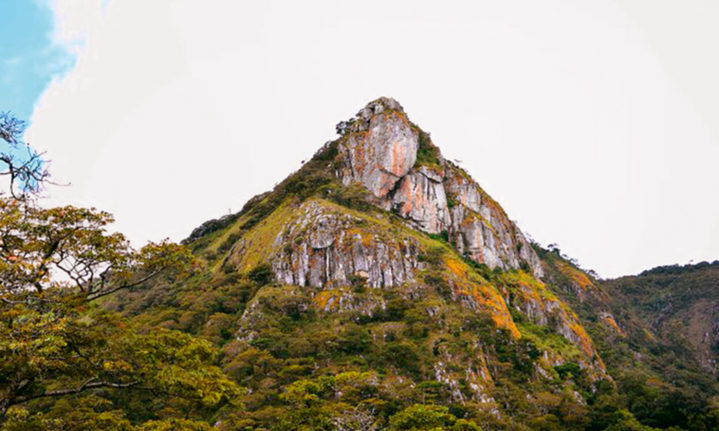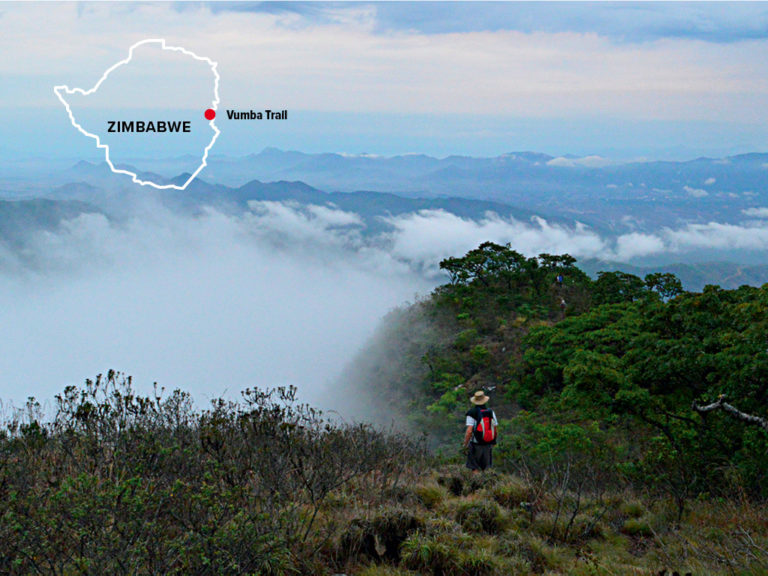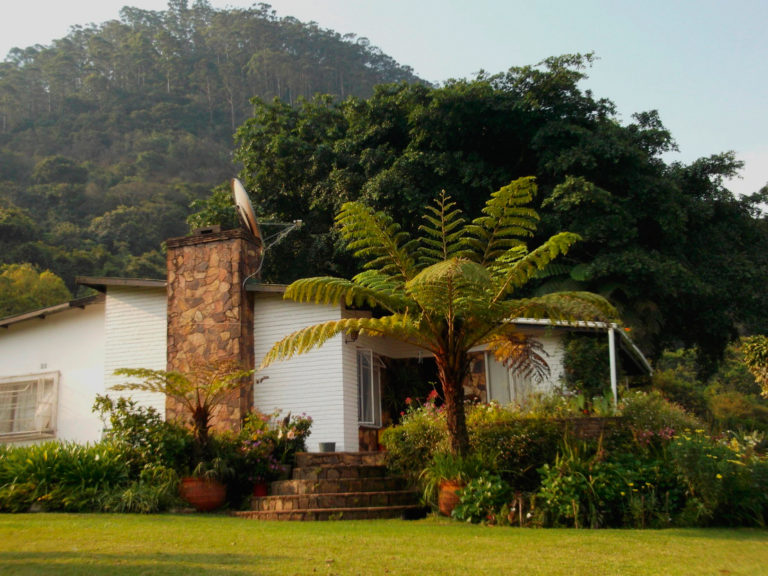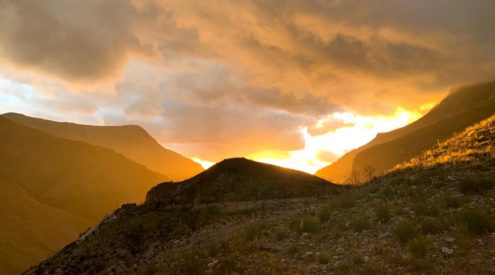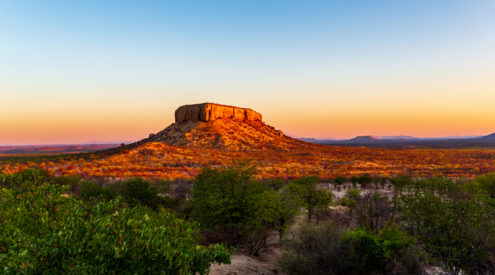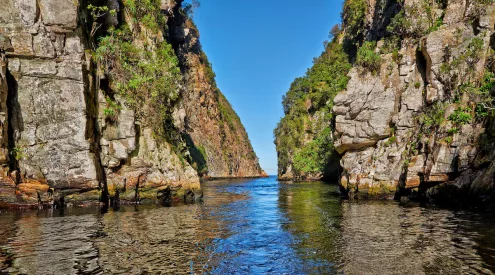A new hiking trail in Zimbabwe is a breath of fresh air, discovers Ryan Truscott
I’d been invited to try out the Vumba Trail in the Eastern Highlands of Zimbabwe and didn’t need a second invitation to escape from cash- and fuel-starved Harare. But the second day of our four-day trek through the fabled ‘Mountains of the Mist’ was harder than I’d anticipated as we crossed over Blue Swallow Ridge in baking October heat.
Day one had been hot too, but we’d cooled off in an icy stream above Zebra Falls after a stunning walk along a ridge shaded by msasa trees ringing with the shrill of cicadas. We’d swum again in the Zonwe Dam, and pitched our tents along its shoreline lit by dancing fireflies.
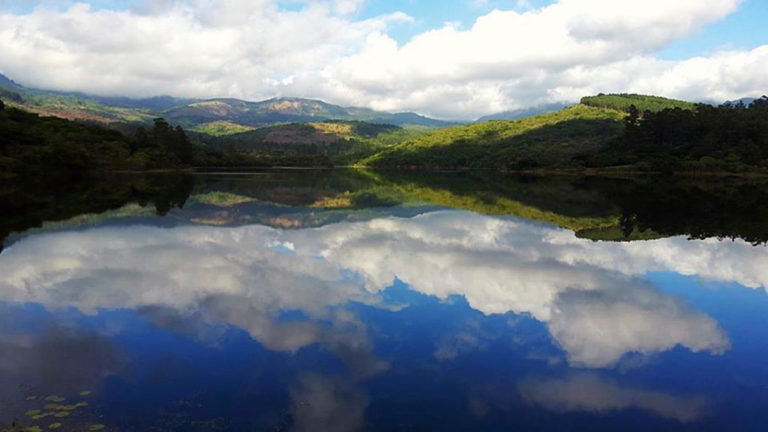
It’s common to wake up to the calls of Narina trogons and African broadbills at the Zonwe Dam campsite. Image: Ryan Truscott.
Day two was proving tougher; a punishing seven-and-a-half kilometre trek up and out of the Zonwe Valley to reach the Vumba Botanical Garden before breakfast, then west through farmlands and plantations to where we stood, with hardly a cisticola moving, let alone the mist-loving blue swallows that give the ridge its name.
I asked fellow-hiker, Willemijn Ruettimann, a Dutch physiotherapist based in Switzerland, how the Vumba compared to the Alps. ‘The steep bits are not a problem, I’m used to that,’ she said. ‘It’s just the heat!’
After clocking up 19 kilometres that day we reached Hurukuru, a guest house set in a beautiful garden at the foot of the Zohwe Range. Owner Peter Buttress had just finished telling me about his resident red-capped robin-chat and its masterful imitation of the crowned eagle’s call when the storm broke. Hailstones the size of golf balls pelted down and 38 millimetres of rain fell in just over 45 minutes. With it, a blessed coolness swept through the Zonwe Valley and the yellow-spotted tree frogs began to call; a strange bleating and whirring sound that resembled extraterrestrials in
quiet conversation.
Mist lingered as we hiked up the Zohwe Range the next morning: a granite ridge, topped with evergreen forest, that juts out towards neighbouring Mozambique. It’s the focal point of the Vumba. Our journey up to the cloud forest took us through a grove of spiny tree ferns, while bush-shrikes and ground thrushes (which had turned decidedly arboreal) serenaded us from the mist-shrouded treetops.
Here we saw the strange tongue-shaped leaves of the forest dracaenas, small shrubs favoured as nest sites by the Swynnerton’s robin – one of the Vumba ‘specials’ that lure many South African birders to these hills. Little wonder the Vumba (alternatively spelled Bvumba) has been designated an Important Bird and Biodiversity Area by BirdLife International.
‘It’s the world as it should be,’ said veteran mountaineer and long-time Vumba and Chimanimani resident, Tempe van de Ruit, who together with expert guide Stewart Chiurawa has spent more than two years perfecting the routes that make up the 68-kilometre-long Vumba Trail.

The precipice at Bunga Views on the southern edge of the Bunga Forest, which is a botanical reserve atop the Vumba Mountains. Image: Ryan Truscott.
Tempe is right. But there are also parts of the Vumba that are not as they should be. In some places the trail takes you past patches of slash-and-burn agriculture where unique montane forest (home to wildlife like samango monkeys, blue duikers and the endemic Marshall’s pygmy chameleon) are being felled. Here and there abandoned fields and derelict homesteads tell of the country’s farm evictions and long-running economic crisis.
But the blazing of a new hiking trail in spite of all this is an act of faith and hope that ecotourism will boost conservation and instil a greater love and respect for these hills.

When it’s not shrouded in mist Lion Rock, at 1,720 metres, has breathtaking views over Lower Vumba and into Mozambique. Image: Ryan Truscott.
FITNESS FACTOR 8/10
It’s possible to do day hikes along portions of the trail, but even the softer options are steep in certain sections. If you have a back- up driver, you can have your heavy kit transported
by road.
VERDICT You’ll fall in love with the chittering of samango monkeys, towering Albizia trees and crystal-clear streams along this trail.
COST Varies depending on if you spend your night under a roof, or under the stars. From R1,000 for two nights’ camping and a night at Hurukuru, including a guide and a map.
THE DETAILS Booking and enquiries via the Friends of the Vumba Facebook page: friendsofthevumba
This article was first published in the April 2020 issue of Getaway magazine.
Get this issue →
All prices correct at publication, but are subject to change at each establishment’s discretion. Please check with them before booking or buying.














